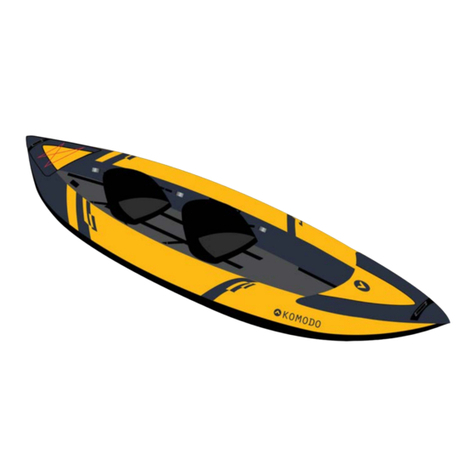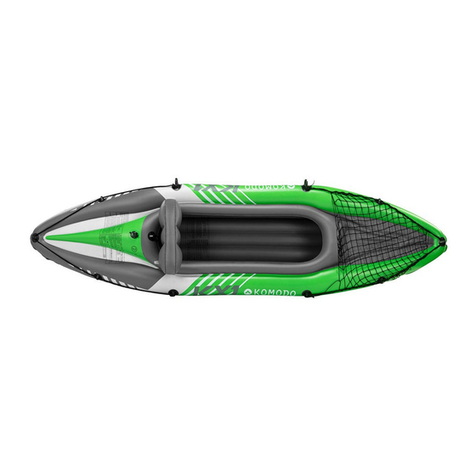
•Congratulations on the purchase of your Komodo inflatable kayak. Please read this
manual carefully before inflating, assembling or using your kayak. Familiarise
yourself with the features of the kayak and ask for professional training if you are
inexperienced in handling this type of kayak.
•It is important to follow proper safety procedures and rules of the waterway that
apply to all kayaks. Always check the local weather conditions before using the
kayak. Be aware of currents in tidal inlets, open seas, small channels or shallow
water regions, and navigate them safely.
•Always use materials of good quality and the correct specifications whenever
working on the kayak. Maintenance work and repairs on the kayak should be
implemented only by qualified personnel. Contact Kogan.com if further assistance
is required.
•IMPORTANT: Keep this manual with the kayak (in a dry place) and retain it for all
future use. If you sell this kayak, ensure it is passed on to the new owner.
•If this is your first kayak, or you are not familiar with this type of kayak, please ensure
that you obtain handling and operating experience before operating. If unsure of
instructors in your area, contact local boat shops, sailing groups or yacht clubs for
recommendations.
IMPORTANT! WARNING:
For the safety of the operator, passengers, and others in the vicinity of the kayak during
operation, always strictly observe the following safety warnings:
•This is not a life-saving device.
•Use only under competent supervision.
•Never allow diving into this kayak.
•Never leave in or near the water when not in use.
•Never tow from any vehicle.
•Adult assembly and operation required.
•Adults should inflate the chambers in numbered sequence and use the printed
ruler on the hull of the boat to check while inflating. Excessive inflation of the kayak
can cause the chambers to burst or cause damage to the welded seams.
•Review all safety requirements regularly. Never navigate alone.
•A Personal Flotation Device (PFD) is required for each occupant. Children and non-
swimmers must wear a personal flotation device at all times. Children and non-
swimmers need special instruction in the use of PFD.
•Be careful when stepping or climbing aboard the kayak. Step into the centre of the
kayak for maximum stability. Distribute the weight of passengers, gear, tackle box
and accessories evenly so that the kayak sits even front to back and side and side.





























